Brave’s Merida Gets Disney Princess Treatment
Critics are assailing Disney for turning "Brave" protagonist Merida into just another princess.
Critics are assailing Disney for turning “Brave” protagonist Merida into just another princess.
Rhiannon Lucy Cosslett (“Disney’s makeover of its Brave princess is cowardly“):
It was only a matter of time before Disney transformed Merida, the heroine of Brave, hailed by many as their first feminist princess, into a female archetype. The Princess franchise, which came into being in the early 2000s when then-chairman Andy Mooney saw the marketing potential in presenting celebrated Disney princesses as a unit, isn’t known for its nuanced portrayal of modern femininity. The cartoons have never encouraged ambition in little girls, with character traits limited to marriageability (Jasmine, Cinderella), beauty (Belle, or Snow White, whose appearance is such that jealous women seek to annihilate her), or submission to drastic physical changes in order to attract a man (Ariel). Disney princesses never really did have much to offer. Until Merida.
To be “crowned” Disney’s 11th princess, the Scottish, red-headed Merida (who refuses to marry the prince) has been treated to the kind of airbrush job that magazine pages habitually go in for. Suddenly her waist is slimmer, her eyes are doe-like with heavy lashes, and she’s subtly grown breasts. As Peggy Orenstein, author of Cinderella Ate My Daughter, pointed out: “In the end, it wasn’t about being brave at all. It was about being pretty.”
It’s unsurprising that those parents who initially praised Disney for its creation of a princess who looked like a real girl are dismayed, to the point where A Mighty Girl, a resource site that helps parents find books and toys that encourage positive feminine role models, has launched a petition. Already it has received more than 100,000 signatures.
As the father of two little girls, I sympathize. We want them to have strong role models. On the other hand, with my oldest firmly in the Disney Princess phase at 4, I can hardly argue with the company making this marketing decision with their merchandising.
Until a couple years ago, I was blissfully unaware of the whole Disney Princess phenomenon. Not only is it not marketed to boys, it didn’t exist until the late 1990s, by which time I was approaching middle age. Essentially, according to the Wikipedia entry, incoming chairman of consumer products Andy Mooney noticed while “attending the company’s first Disney on Ice show . . . that several young girls attending were dressed in princess attire that was not authentic Disney products.” So, he launched the line, retconning Snow White, Cinderella, Aurora (Sleeping Beauty), Ariel (the Little Mermaid), Belle (the beauty of “Beauty and the Beast”), and Jasmine (from “Aladdin”) as a group of princesses.
Subsequent movies have more deliberately targeted the line, with Pocahonas, Mulan, Tiana (“The Princess and the Frog”), Rapunzel, and Merida not only creating more characters but also diversifying them racially and ethnically for the sake of both inclusiveness and merchandising.
According to the entry, “Despite limited advertising and no focus groups, the various Disney Princess items released became a huge success. Sales at Disney Consumer Products rose from $300 million in 2001 to $3 billion in 2006.” One can hardly argue with that success.
Given that I’m not the target audience for the movies and my girls are still a bit young for them (they’re just too long and plot intensive), I don’t have any commentary on the suitability of the various princesses as role models. I gather, though, that they’re progressively more assertive and heroic than the early ones. That’s not surprising, considering that “Snow White” was released in 1937 and “Cinderalla” in 1950, both based on very old fairy tales.
Regardless, my 4-year-old loves Disney Princess costumes, dolls, and other paraphernalia. We’re about to take our third Disney vacation (a second trip to Disney World in Orlando in the span of a just over a year, with a Disney cruise over Thanksgiving). She gets giddy when she sees the actresses dressed up as the various princess characters.
Occasionally, she tells me she wants to be a princess when she grows up. While I’ve advised her to keep her career options open, I’m not at all worried about this nefarious influence. She is, after all, 4. If she’s still dressing up as Cinderella or Ariel at 14, I’ll consider intervention.
And, even while in her princess phase, she’s also a huge fan of Peter Pan, Jake of “Jake and the Neverland Pirates,” and of pirates in general. She has various costumes, stuffed animals, playsets, and swords related to those characters as well. And, no, I don’t stay up late at night worrying that she’ll grow up an live a life of nautical crime.
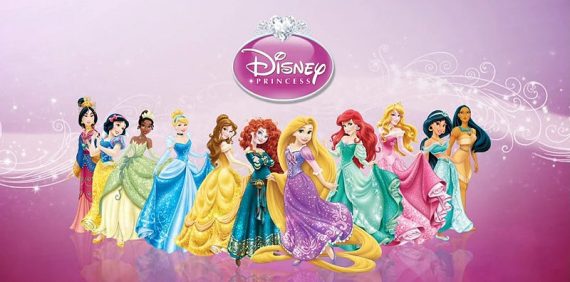

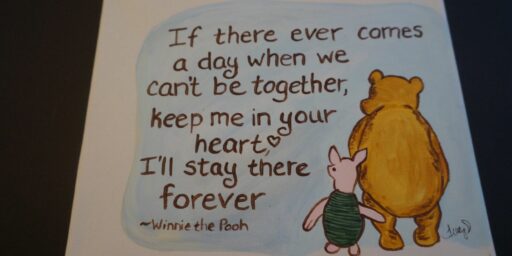
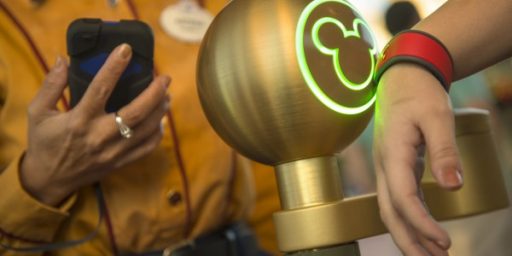

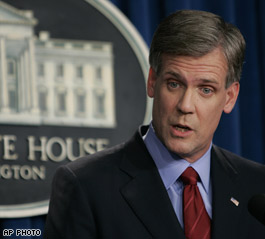
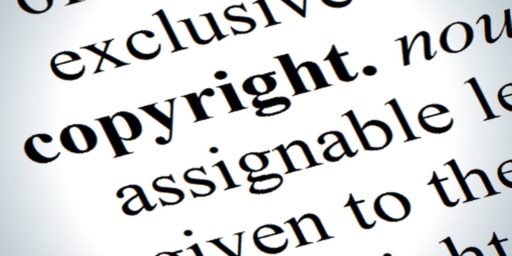
Fortunately, unless you were told it is Merida, you’d never know. It’s just some red-headed chick with curly tresses and a too-tight dress (unsuitable for shooting arrows in).
(1) Is she the 1st Pixar princess?
(2) Her princesshood just reflects the weakness of the movie. The Pixar geniuses go for a female protagonist, and what’s that got to be about? Marriage yea/nay. Because what *else* could girls possibly deal with? Number of Pixar films centered on prince’s aversion to marriage: zero.
The other two stages that girls quite often go through are a) a love of everything pink, and b) love of horses.
I don’t remember either of these in my own childhood, but I’ve been assured by my friends who are now parents of girls that these are prevalent. You have been warned.
@Anderson: Yes on (1).
@grumpy realist: My eldest loves pink and purple and I accommodate within reason when selecting her clothes. My youngest better like pink and purple, since she’s getting hand-me-downs. Thus far, the interest in horses is limited to riding the rocking horse we already own–a hand-me-down from friends’ girls.
When my daughter was small, we lived in the Tampa Bay area and made many, many trips across the state to “feed the mouse”, as we called it. No one was more into the Disney princesses than my daughter who has grown into a sensible, confident teenager who wonders why I ever let her watch what she now calls “those sexist movies”. (Frankly, I’m more disturbed by Disney’s predilection for killing off one or both of the parents in all their movies.) I wouldn’t worry too much about girls going through a princess phase any more than I worry about video games causing all of society’s ills. Good parenting counts for so much more than good marketing.
Ginger-Hotness
@grumpy realist:
But love of pink isn’t entirely natural — it’s culturally encoded. That is, do girls love pink because they love pink, or because they pick up on multiple clues that girls are supposed to love pink, and so they love pink because that’s what girls are supposed to do?
Remember that 100 years ago forceful, bold, masculine pink was a boy’s color and placid, peaceful, domestic blue was a girl’s color….
And of course, now we know why Disney bought Star Wars. More Princesses = More $$$$$
I’m in daughter hell. She’s 13 and on the one hand, she owns 40 pairs of shoes, many of them quite punk/goth, and eyeballs expensive leather jackets. (I have thus far resisted.) On the other hand we just came from the American Girl store in Manhattan. You don’t want to know what that cost me.
Goth American Girl? That was not in the Daddy Handbook.
But on the topic of this character, yeah Disney is pathetic. It’s common, happens all the time, even to people other than Disney, but it’s still gutless. Not because of the “role model” bullsh!t, but because they trashed one of their own characters. They took a moderately interesting character with some tinge of nuance and reduced her to a cookie cutter non-entity.
@michael reynolds:
Well, technically, she owns nothing, since as a 13 year old she has no money of her own. You, my friend, on the other hand, bought and paid for 40 pairs of punky/gothy girl’s shoes.
@Rafer Janders: But what turns on a love for pinkness? I remember going through a phase where I insisted on wearing green every day, but pink just passed over my head. I certainly don’t remember getting exposed to a Lot of Pink. (Maybe if we had had pink toads in the pond? I dunno…)
Someone else will have to tell me–is pink all that prevalent in girly stuff at the 6-10 year age? In other words, do we have a reverberating and self-reinforcing meme running around here?
@James Joyner: You’re reminding me of a summer I spent running around France with my college roommate. For whatever reasons afflict the gods of fashion, France had decided the colors in vogue were to be pink and purple. Everything. It was so intense that I still remember the one designer that stuck to their standard green and white (Caleche) and in consequence stuck out like a sore thumb. Which is maybe what they intended.
I kid you not. All over France it was like Homecoming weekend at UIUC with orange and blue, except that it was, of course, pink and purple. After a week of running around Paris my eyeballs hurt.
Having raised two Disney Princesses, I strongly recommend “Embrace and Extend”.
Talk to your kid and reshape the message. Turns out every Disney Princess (but one) makes a fine feminist icon when placed in the proper context.
If Ariel (the Little Mermaid) had learned to write, she could have written a letter to Prince Eric and thwarted Ursula as soon as she landed on the beach.
Snow White gains control of her life (and a functional, if diminutive, family) when she confronts her fears in the forest and chooses to not be afraid.
Belle (of Beaty and the Best) loves to read and overpowers ever single plot obstacle with indomitable will, making Belle ione of the best role models for *boys* in the Disney canon. What father doesn’t what a kid who squares to the Beast and demands: “Step into the light”.
…and so on.
The one exception is also the most valuable: The princess without her own name. Aurora/Briar Rose/ Sleeping Beauty is so completely passive, so conventionally 50s “feminine”, that she doesn’t even get pick the color of her own dress.
Who wants to be that princess?
@michael reynolds: If she’s really into fashionable clothing, get her into sewing her own clothes. Nothing makes one feel more smug than creating an accurate copy of some gawdawful expensive couture designer stuff for one-twentyith of the price.
(And no, I’m not going to listen to designers whine about “ripped off designs.” That’s what design patents are for, you sillies. If you don’t have enough novelty to get your own patent and you have just recycled something from history, I don’t see why someone else shouldn’t do the same to you.)
@grumpy realist:
Oh my god yes. Try buying something for a 6-10 year old girl that ISN’T pink, I dare you. Even things that have no real reason to be pink, like a ski helmet or ski jacket.
@grumpy realist: My theory: every child born in a U.S. hospital is discharged with a white blanket with blue and pink stripes, from there its all set, your either a blue or a pink for the next several years.
@Tylerh: From what I recall, Mulan was one of the more satisfactory role models in the movies. I assume James is saying that she was retroactively princified, like Brave, with the store products and perhaps home video.
@PD Shaw: I haven’t yet seen Mulan, so don’t know how much the “Disney Princess” variant differs from the film version. I’m just saying that those movies came out before the whole “Disney Princess” marketing concept. I don’t think I ever thought of Snow White or Cinderella as princesses, for example, since they’re not princesses at all during the entire storyline; they just marry the prince and live happily ever after.
@grumpy realist:
I just went to Amazon and plugged in a search for “girl’s bicyle helmet”. Top results?
1. Schwinn Toddler’s Carnival Girl Helmet — in pink and purple.
2. Razor Youth Multisport helmet — in pink
3. Disney Princess Bicycle Bell — in pink and decorated with three Disney princess characters
4. Bell Infant Sprout helmet — in pink
5. Disney Princess Girl’s Rapunzel Toddler helmet — in pink
Then I ran the same search for “boy’s bicycle helmet”. Top results? Blue, black, red and yellow helmets, and none branded with Disney princesses.
This is not right.
@PD Shaw:
Interestingly, Mulan *was* the favorite Disney Princess in our household.
Once your own little Princess has adopted the updated interpretation as his/her own, she/he has an astonishing ability to make the branded stuff fit into their worldview. It’s a joy to behold how quickly a kid an reshape a narrative when given the space to do so.
Parents are not helpless against the marketing onslaught.
@Rafer Janders: But those are colors that are likely to appeal to little boys. And there are indeed character helmets among the top results: Marvel superheros and Cars, a Disney/Pixar product.
@grumpy realist:
If a thirteen year old girl makes her own clothes to wear to school, she is paying homage, not ripping off anyone.
Many designers would have a tear in their eye if they learned *they* were the inspiration for such a drive to create beauty.
.
@James Joyner:
But girls can’t like blue, black, red, yellow or silver?
And girls can’t like superheroes or Cars?
The issus is that the universe of “acceptable” choices is far, far larger for boys than it is for girls. Boys get the entire range of colors and cool, powerful, active superheroes like Spider-Man and Iron-Man. Girls get one color and one set of role models, princesses, who in real life are known mainly for being powerless playthings whose main role in life is to be bartered among royal families.
MLB celebrates Mother’s day.
How?
By having players wear pink attire and hit with pink bats….
(Ok, that’s not the only thing they did, but it was the most visible thing.)
@michael reynolds:
I did not know that you were the parent of Imelda Marcos.
@grumpy realist:
… I feel a Cosby episode coming on …
@Rafer Janders: I don’t know that I have an opinion on the origin of pink preference, but I suspect its at least partly cultural. A good visual image for your argument would be the toy section of any department store; an aisle with young girls toys will look pink because most of the boxes will have some pink on them, if not all pink. I assume this is to attract parents looking for a toy for girls, but it would have the tendency to educate girls: “Hey girls, look over here!!!”
—-
BTW, I can’t wait for Disney to make Vivian Ward its next Disney princess!
@Rafer Janders:
Wrong. I assume Michael gave them to his daughter. That makes them hers. As the parent of divorced children, I can assure you, if you give them something, it is theirs to take where they like. Otherwise you aren’t giving them anything, you are just allowing them to use your stuff.
Actually, you can trace the really intense marketing back to pre-natal gender-testing:
Read more: http://www.smithsonianmag.com/arts-culture/When-Did-Girls-Start-Wearing-Pink.html#ixzz2TClp1tzE
@OzarkHillbilly:
So he made the decision to buy 40 pairs of shoes. Seems like that’s ultimately his issue, then, and not his daughter’s.
@Franklin: For heaven’s sake, doesn’t anyone go to 4H any more? That’s where I learned sewing and then continued through all my teenage years. Learned how to make tutus, Renaissance costumes….etc.
I thought making one’s prom dress or graduation dress from junior high was a standard rite of passage. What happened?
@PD Shaw: The “Mulan” movies were great. I also liked the “Pocahontas” movies.
@grumpy realist:
Forever Twenty-One and sweat-shops in Bangladesh happened.
Disney gets away with a lot. Seriously, Based on all the young women who graduated from Disney shows – Britney Spears, Miley Cyrus – I can only conclude that Disney has a very busy casting couch.
@PD Shaw & @James Joyner:
Mulan’s “princessification” is pretty similar to Merida’s. And in both cases the issue — beyond all the gender role stuff — is best expressed by what @michael reynolds wrote:
This is a case where the very act of becoming part of the princess brand involves the characters compromising the specific positions that they took in each of their respective stories.
Of course Disney is well within it’s rights to do so. But it does represent wanting to have things both ways. What will be interesting to see is how Merida gets portrayed (if at all) in any of the spin off “Disney Princess” stories and animated products (any bets on who the “Tom Boy” princess is?).
I don’t have children, but my fiancee and I have both worried about the impact Disney movies could have on a potential daughter’s self-esteem. I think some of the newer movies are *better* but the classic canon is full of harmful stereotypes and downright misogyny in cases. Look at Beauty and the Beast. The undertones of domestic violence in Belle’s treatment by Beast are a prime example of the insidious message these movies are imparting to little girls. You are weak, you need and must rely on a “prince charming” to “save” or advocate for you.
We would not want a daughter caught up in the weak female and consumerist messages that Disney films serve as a vehicle for. Both of us came from the lower class and thus we were both somewhat shielded from the Disney message by our parents’ poverty. We didn’t visit Disney World until we were adults, and trips to movies, and certainly the purchase of VHS tapes, were rare treats indeed.
I’m not singling Disney out here. The way parents now use technology as an easy babysitter (we were both talking about this phenomenon of DVD players in cars now yesterday, and agreed we wouldn’t want to tranquilize our children through media consumption) is disturbing to me, even though I think it does make them “good corporate citizens” in their early training on how to consume and always get new, new, new.
@aFloridian: I wouldn’t worry about it that much. Young kids take their primary cues on things like gender roles from their parents. Treat the women in your life with respect and the kids understand that’s what is expected.
I also wouldn’t assume that young girls watching Beauty and the Beast necessarily reconcile themselves to the Beast. Kids watch movies on their own terms and they may not like a character who they think is mean, even if they have a character arc in which they are redeemed.
The nice thing about even the older Disney movies is that a lot of them are from the female point of view. Miyazaki movies, which our kids love, are as well. Girls want to see movies they can see themselves in, which can be rare.
@michael reynolds:
Disney isn’t in the business of making interesting characters (It’s nice when it accidentally happens, though).Its in the business of making money. And you can make a lot of money selling “Princess” merchandise to little girls – or, actually, their hapless parents. I feel for you, bro. You probably didn’t understand the pleading, whining and shopping sh!tstorm you were in for when you heard the announcement , “It’s a girl!”
@PD Shaw:
Really? You need to sell me on that idea. Or rather that the specific “female POV” those early films are from is worth encouraging.
110% agree. Pretty much every Miyazaki film features a prominent female character that is neither Disney princess or “man-with-breasts.” I sometimes wish I had kids so I could get the pleasure of introducing them to Miyzaki’s work.
Or most media in general. Trying to find girl-friendly comics and popular young genre fiction is tough.
@matt bernius: “Really? You need to sell me on that idea. Or rather that the specific “female POV” those early films are from is worth encouraging.”
Many Disney movies have females as the central characters of importance, we follow the plot caring about what happens to them — they make friends, magical things happen around them, and good triumphs over evil. In my experience, girls want to see movies like that, which means most Pixar movies, whatever their qualities, fall flat (with the exception of Brave). My problem with most animation these days is the quality stuff is not aimed at kids anymore; movies like UP or Shrek are interesting to adults, but not necessarily kids.